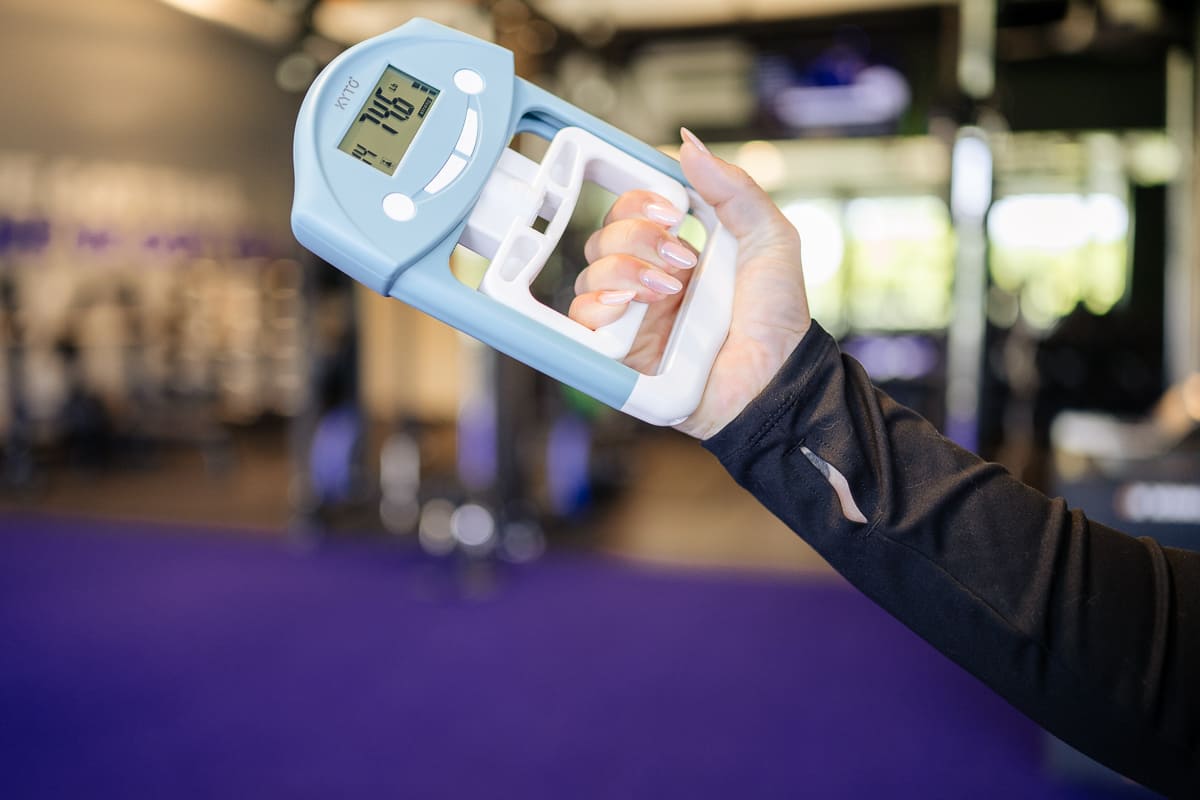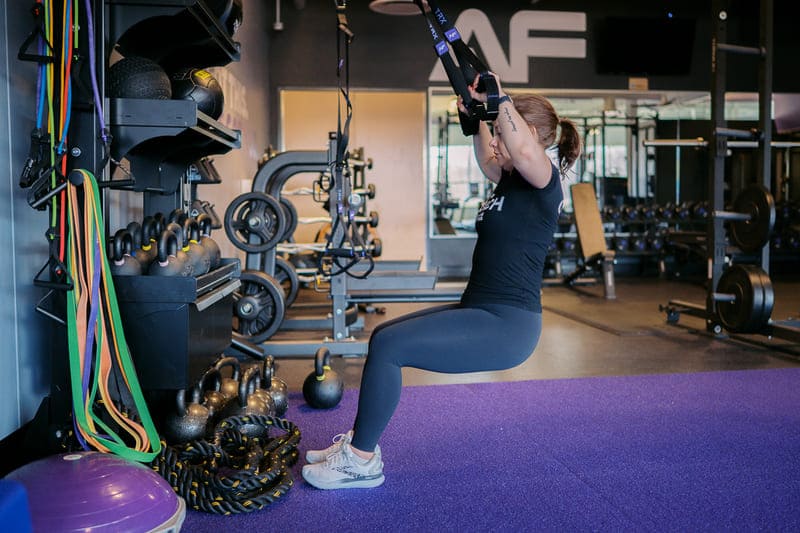In today’s fast-paced world, managing stress is a must. In fact, chronic stress could even contribute to a shorter life expectancy. That’s why understanding how to reduce cortisol — aka the stress hormone — is a game-changer for your overall health and wellbeing. Let’s talk about cortisol’s impact on your body and how diet, exercise, and lifestyle can impact your stress levels.
We’ll cover:
- What is cortisol?
- What do high levels of cortisol feel like?
- How to reduce cortisol naturally
- Does exercise reduce cortisol?
- Diet and cortisol
- Best exercises to reduce cortisol
What is cortisol?
Cortisol is a hormone produced by your adrenal glands that helps regulate your body’s response to stress. Hormones like cortisol act as messengers and send signals telling your body what to do.
During stressful events, your adrenal glands release cortisol to maintain energy supply as your body breaks down fats and protein (aka gluconeogenesis).
How does cortisol affect your body?
Cortisol isn’t just a stress hormone; it affects nearly every organ and process in your body, including your metabolism, blood pressure, blood sugar levels, and your sleep cycle. It also plays a role in exercise recovery and may serve as an indicator of overtraining.
Cortisol is naturally occurring, so it’s not inherently bad for your body. However, cortisol levels that are too high can negatively impact your overall health and wellness.
Factors that affect cortisol levels
Your daily levels of cortisol can fluctuate, even on an hourly basis. Factors that impact your cortisol levels include:
- Stress
- Sleep
- Diet
- Medications
- Conditions such as endocrine diseases, depression, or alcoholism
- Activity levels
Symptoms of high cortisol levels
High levels of cortisol can affect how your body feels and may even result in physical symptoms, including:
- Weight gain and increased appetite
- Muscle and bone weakness
- High blood pressure
- Stretch marks and bruising
- Fatigue
Left unchecked, high cortisol levels can increase your risk for more serious complications like cardiovascular disease, diabetes, cancer, and mental health conditions like depression.
How to naturally lower cortisol levels
In today’s nonstop on-the-go culture, knowing how to lower cortisol levels can help you feel more relaxed and improve your overall health and wellness. Here are four of our favorite tips for how to naturally lower cortisol.
- Engage in regular movement and exercise. Routine low- to moderate-intensity activity is key. Do exercise that you enjoy and be social during exercise. (Might we recommend group training?)
- Tap into your creative side. Paint a picture, sing a song, dance — creative activities are a great way to lower cortisol.
- Set boundaries. Set realistic goals for what you’ll accomplish in a day, prioritize work/life balance, and make time for yourself. (Did someone say massage?)
- Prioritize sleep. Your circadian rhythm is closely linked to your body’s cortisol production. Lack of sleep and chronic sleep issues are often associated with higher cortisol levels.
Does exercise reduce cortisol?
So, does exercise reduce cortisol levels? The short answer is yes. A 2022 study indicated that regular physical activity was an effective strategy for lowering cortisol levels. However, too much intense exercise could actually increase your cortisol levels. As the saying goes: Everything in moderation. Creating a balanced workout routine that includes a variety of training formats — for example: cardio, strength training, and HIIT — and prioritizes rest and recovery is key.
Try one of these low-intensity exercises and activities to naturally lower cortisol:
How to lower cortisol with diet
Similar to the way that nutrition impacts body composition and metabolism, diet can also influence your cortisol levels on a day-to-day basis. Stronger U’s Gianna Masi, RDN, CISSN, CPT, has three key nutrition tips for keeping cortisol under control.
- Balanced plates: Eat a diet that’s rich in protein and low in refined sugars or carbohydrates. “Protein supports our metabolism alongside strength training. The satiation from protein can lessen the high and low fluctuation of blood sugars,” Masi explains. “Eating refined sugars or carbohydrates without a balanced approach can lead to increased cortisol secretion. Conversely, eating too few carbohydrates or calories can increase cortisol levels if the body perceives this as stress.”
- Whole foods: Focus on eating whole foods such as fruits and vegetables, grains, beans, lean meats, and dairy. Masi says, “Eating less processed foods as often as possible will always be a good choice for our health and may benefit our cortisol levels as well.”
- Consistent meal patterns: Avoid skipping meals, maintain a consistent meal schedule, and stay hydrated. Masi notes, “Hormones, in general, are also impacted by our hydration status. This is just another good reason to optimally hydrate every day.”
What foods reduce cortisol?
While there is no magic solution for how to lower cortisol levels and lose weight, Masi says these foods can help naturally support cortisol regulation in your body:
- Omega-3-rich foods like fish and walnuts
- Magnesium-rich foods like spinach and kale
- Antioxidant-rich foods like berries, beets, and dark chocolate
- Fermented foods like kombucha, kimchi, yogurt, and sourdough
Lastly, Masi says, “Consuming nutrient-dense foods and nourishing meals and snacks that prioritize our fullness and macro- and micronutrients can go a long way in supporting our hormone health.”
Breathing exercises to lower cortisol levels
Movement and nutrition are effective ways to reduce cortisol levels over the long term, but sometimes you need a way to reduce stress, like, now.
Enter: breathing exercises. A 2019 study suggested breathing exercises may decrease stress as measured by physiologic markers like cortisol. When you need a few moments to yourself, try one of these exercises to lower cortisol levels.
Box breathing exercise
Box breathing is one of the most common breathing techniques. To practice box breathing, lay flat on the ground and let your knees fall to the side unsupported. If you prefer, you may use yoga blocks to support your knees.

How to:
- Take a deep breath in for 4 full seconds and fill your lungs.
- Once full, hold the air in your lungs for 4 seconds.
- Release the air slowly for 4 seconds.
- Hold your lungs empty for 4 more seconds.
- Then, you’re back to the beginning of your breathing “box.” Repeat this cycle of breath 5–10 times, or for as long as you need to relax.
4-7-8 breathing exercise
4-7-8 breathing is another common stress-reducing and relaxation technique. Begin in the same position as the box breathing technique.

How to:
- Take a deep breath in through your nose for 4 full seconds and fill your lungs.
- Once full, hold the air in your lungs for 7 seconds.
- Release the air slowly through your mouth for 8 seconds.
- Repeat this cycle of breath 5–10 times, or for as long as you need to relax.
Meditation
Similar to other mindfulness exercises, meditation draws attention to your breath to help your body and mind relax.

How to:
- Lay down or sit in a relaxed posture.
- Draw your attention to your body and your breath, feeling the sensation of your breath as it goes in and out. Slowly release any tension in your muscles.
- Allow your mind to go quiet and focus only on your breath. Be patient with yourself if your mind wanders. Continue this practice for 5–10 minutes, or as long as you need.
- As you wrap up, take stock of how your body and mind are feeling. Slowly lift your gaze and notice your surroundings to get reacquainted with your environment.
Try this: Apple Fitness+ meditation
Did you know that you get access to a free Apple Fitness+ subscription* with your Anytime Fitness membership? Unlock hundreds of guided meditations with Apple Fitness+ — here’s everything you need to know.
.jpeg)
Bonus: Child’s pose
Closely related to breathing techniques for relaxation, meditative yoga has been shown to decrease markers of psychological and physiological stress such as cortisol. One of our favorite yoga exercises to lower cortisol levels is child’s pose.

How to:
- From a tabletop position on your hands and knees, bring your feet together and let your knees open slightly to the sides.
- Guide your hips on top of your heels and extend your arms above your head, touching your palms and fingertips gently to the ground. Keep your upper body and torso stacked over your lower body.
- Let your forehead connect to your mat on the floor, feeling the stretch in your spine and hips.
- Close your eyes and bring awareness to your breath.
- Hold the pose for 30 seconds, or as long as you need to relax.
A final word on how to reduce cortisol
When you’ve got a busy schedule and lots of to-dos, learning how to naturally lower cortisol can make a big impact on your overall health and wellness — including sleep, weight management, and mood.
Focus on setting boundaries and prioritize a healthy diet and regular exercise routine, and remember that the best exercise to reduce cortisol is the one that works for you, whether it’s meditation, yoga, or taking your dog for a walk. Even the shortest relaxation exercise can make a difference.
More health and wellness retargets
- What Are Somatic Exercises? A Guide for Beginners
- 14 Cheap, Healthy Meals to Boost Your Energy
- Hunger or Cravings? How to Listen to Hunger Cues
- Myth-Busting: How Much Water Should I Drink in a Day?
- How to Tell the Difference Between Soreness and Pain
Want more health and wellness content? Check out the Anytime Fitness blog for more fitness, nutrition, and recovery tips from our expert Coaches.
Terms & Conditions
*Offer open to existing Anytime Fitness® members of participating locations in the United States and Canada, only. Offer valid for access to Apple Fitness+℠, access begins on eligible device activation and continues for 3 months. Fitness+ requires a subscription and Apple ID with payment card on file. Reactivation of the offer is required every 3 months to maintain access. If free access ends, payment card on file will be charged $9.99/month USD and $12.99/month CAD and subscription automatically renews until canceled. Apple may change the subscription price at its discretion, other terms and Apple Privacy Policy apply; see the applicable terms at https://www.apple.com/legal/internet-services/itunes/. Offer requires use of the Anytime Fitness mobile application. Offer limited to 1 subscription per Family Sharing group, Apple IDs already associated with a trial or subscription for Fitness+ are not eligible. Valid only for Fitness+ in the United States and Canada. Fitness+ requires iPhone 8 or later with iOS 16.1 or later, or Apple Watch Series 3 or later with watchOS 7.2 or later paired with iPhone 6s or later with iOS 14.3 or later. Fitness+ is a registered trademark of Apple Inc. Apple is not a sponsor of this promotion. No cash value, not valid with any other offer, no refunds or credits. Each Anytime Fitness location is independently owned and operated. Void where prohibited.






